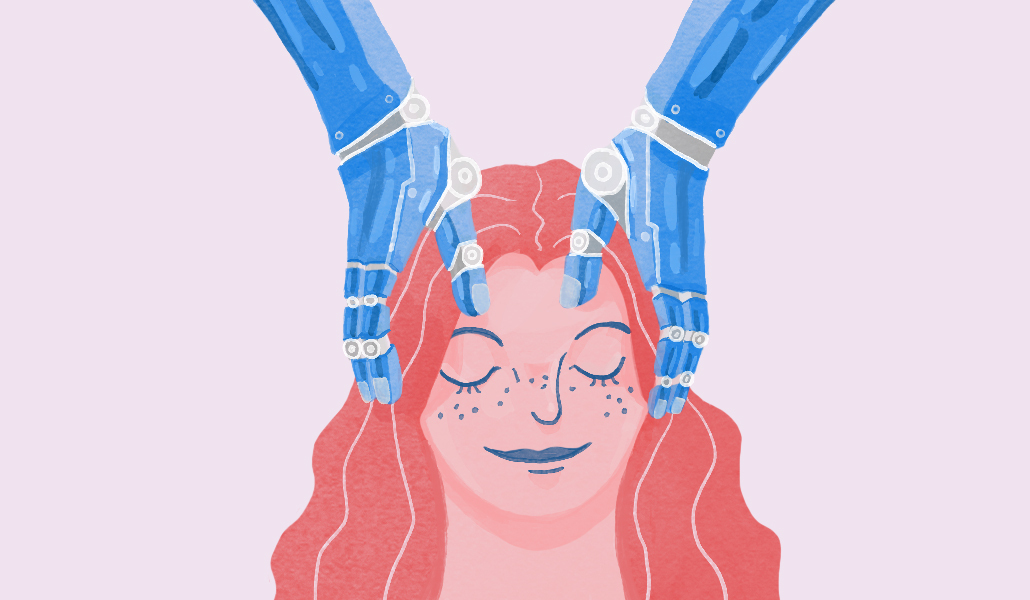AI and body-reading tech emerge as latest employee burnout fixtures in workplace

Mental health conditions and symptoms of burnout are plaguing employees worldwide.
Since the pandemic, roughly 42% of employees globally have reported a decline in their mental health, a McKinsey report found. And mental health disorders including depression, anxiety and others aren’t just hurting employees. They’re dealing a $1 trillion blow in lost productivity, according to the World Health Organization.
Employers and organizations are working to address the problem in and out of the office, many using digital tools that are accessible at any time from almost anywhere to support their staff.
“Employers are taking different strategies,” said Mary Kay O’Neill, a senior health consultant at asset management firm Mercer.
O’Neill said mental health has come out of the shadows. Whereas before the pandemic, individuals were sensitive to talking about the subject, that is no longer the case. The pandemic blew the lid off of mental health stigmas and people are more likely to acknowledge it, she explained.
McKinsey’s research found there are several emerging technology categories built around employee wellness including video therapy, artificial intelligence chatbots and gamified exercises, wearable accessories accompanied by digital biomarker apps and analytic software.
The Society for Human Resource Management (SHRM) has tracked some of these systems and documented how they work. It has an annual pitch competition in which it seeks out innovators crafting solutions for critical workplace challenges.
In 2021, for example, it came across smartwatch and AI tech provider Mentore. SHRM’s managing director of workplace innovation and venture capital Guillermo Corea said Mentore has created AI tags that employees put on their bodies to detect stress. The tags send informative signals to its parent platform, which can determine if a worker might be close to experiencing a stress-related injury if they have a physical job in a distribution center for instance.
Mentore is just one of several cutting-edge technologies presently emerging. Several others are building wearable biomarkers and apps to assess well-being and pain points via voice data, heart rates and skin temperature, according to McKinsey.
“The landscape has changed a lot over the past two years, as far as workplace tech is concerned and so these companies are young startups,” said Corea.
AI sentiment analysis
Much of the tech coming out is centered around communication between managers and staff. Software such as Mainstay is designed to open chat lines and harness behavioral science to help foster honest, productive conversations between colleagues.
Mainstay is a texting platform that allows employees to chat with one another and managers to gauge temperature checks about how workers are feeling with surveys and one-on-one talks.
Humaxa, like Mainstay, is a digital chatbot that employees can use. It uses AI sentiment analysis to understand how employees are feeling and immediately sends them resources such as intervention hotlines, if warranted. The Humaxa bot can be installed into work communication platforms like Slack and Outlook as a plug-in.
These apps not only offer a new form of communication but can also analyze employee feelings and report back that data.
McKinsey’s research found that e-health interventions can be effective in improving employees’ mental health. Employees have two major ways of accessing wellness benefits, through their insurance plans and employee assistance programs (EAPs). Data from SHRM found that 73% of organizations are offering an EAP.
As employers look to provide on-demand behavioral health resources from places like Spring Health or Lyra Health, the thought is translating over to physical well-being and company plans are implementing telehealth for primary and urgent care through platforms such as Teladoc Health, many of which use AI during their intake processes.
But even as companies bolster their offerings with meditation apps and chatbots, they’re missing an opportunity.
Jacqui Brassey, a senior expert in people and organizations at the McKinsey Health Institute, said many companies are trying to deal with mental health on an individual level and failing to tackle the “broader problem.”
The institute surveyed 50,000 employees about their experience in the workplace for mental health and found what’s driving exhaustion and mental health challenges are experiences in team settings and how organizations build a culture of inclusion. The survey also indicated that there’s a disconnect between company leaders and employees.
Brassey said many of the individual programs developed are important but can’t manage problems at an organizational level. Some companies try to improve company culture with training and seminars, but they’re not effective, she noted.
“The great ones are moving towards making this more of a strategic, integrated topic rather than the topic on Friday,” she said. “They are just ticking a box [for] compliance. You need to look at this from a systemic point of view.”
